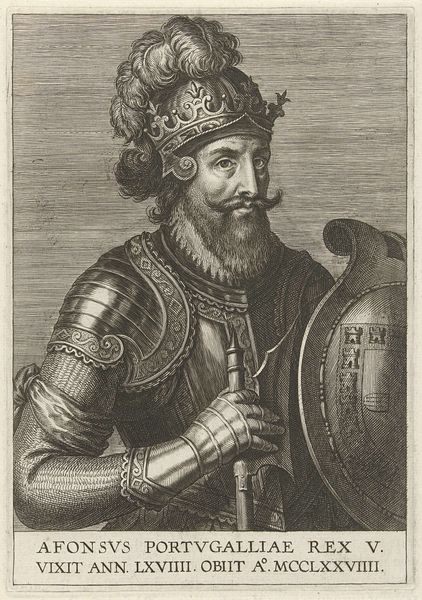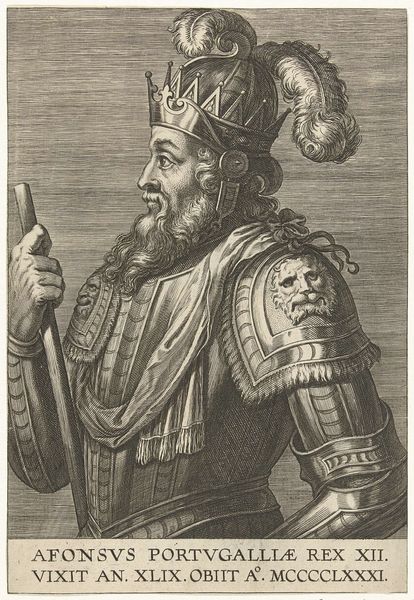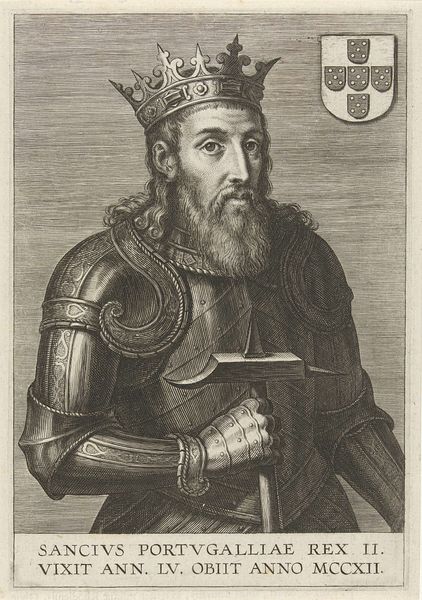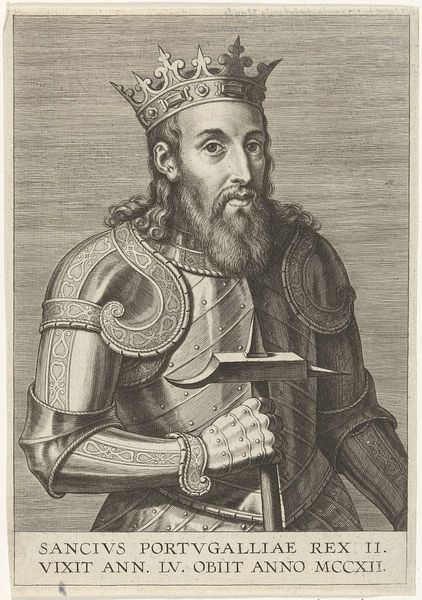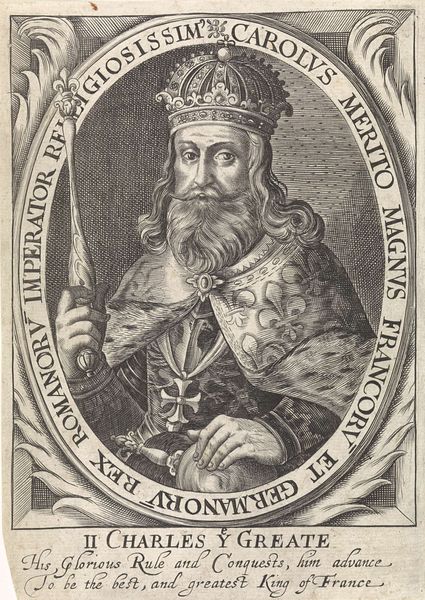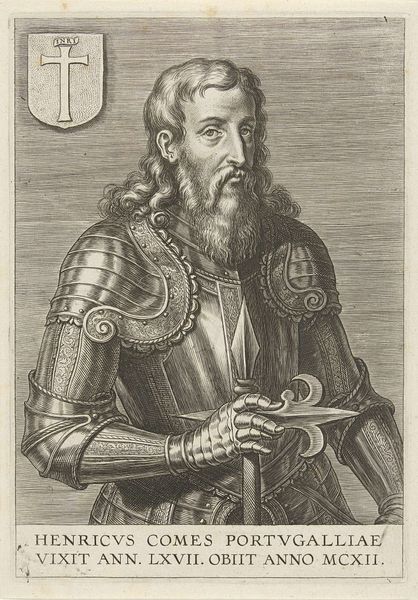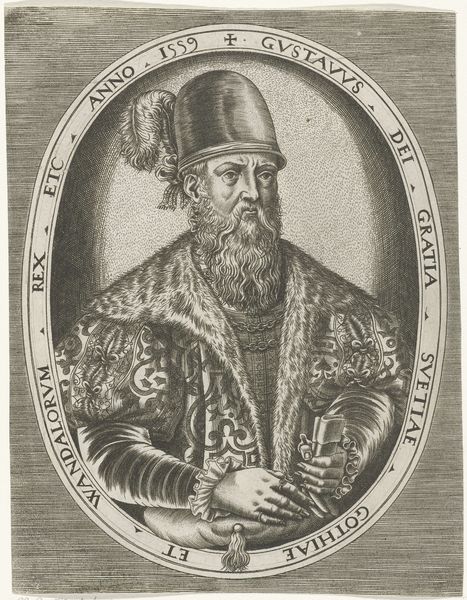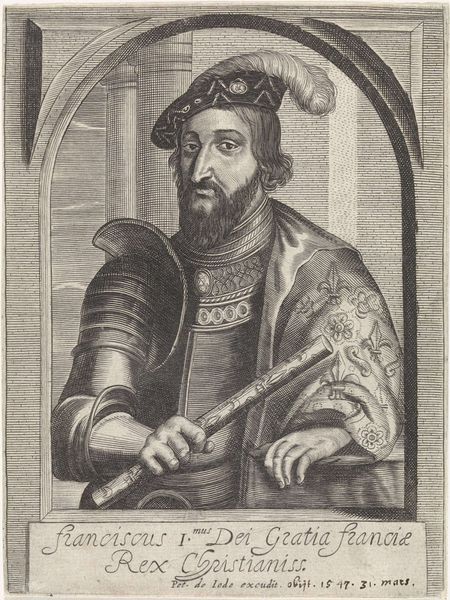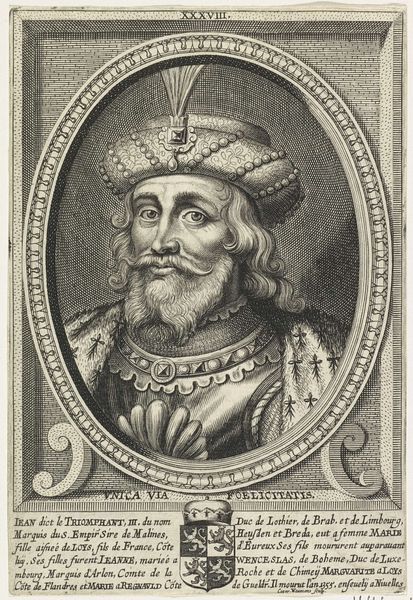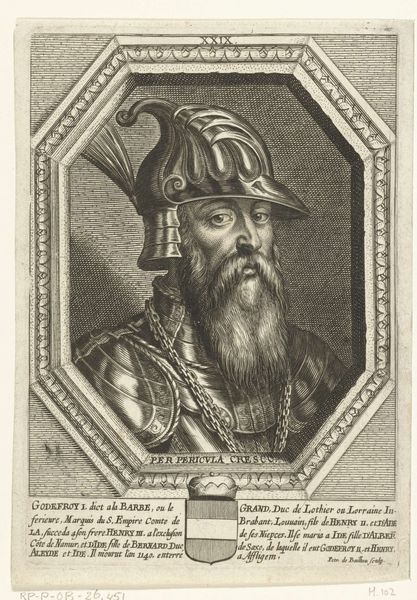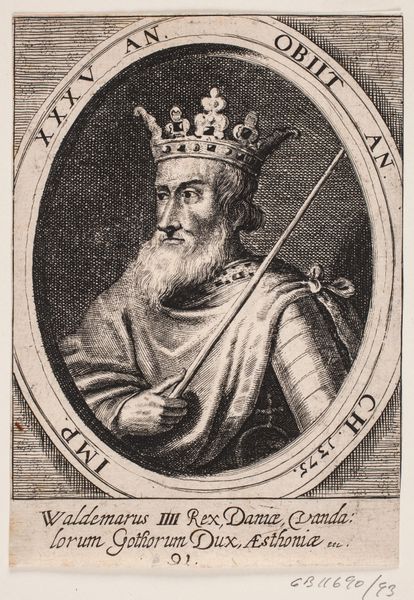
metal, engraving
#
portrait
#
baroque
#
metal
#
old engraving style
#
portrait reference
#
portrait drawing
#
history-painting
#
academic-art
#
engraving
#
portrait art
Dimensions: height 190 mm, width 132 mm
Copyright: Rijks Museum: Open Domain
Editor: So, this is a 1621 engraving by Cornelis Galle I, a portrait of King Afonso III of Portugal, currently held in the Rijksmuseum. The detail is impressive! I'm really struck by how much visual weight is given to his armour and shield - it projects authority. What symbolic weight would this portrait carry at the time? Curator: It's less about recording physical likeness, and more about projecting an idealised, lasting image of kingship. The armour, of course, is immediately significant; it evokes strength, power, and protection – these are timeless virtues expected of a ruler. But think about the crown—notice the plumage. Editor: The feathered helmet is very interesting; almost birdlike… What does that add? Curator: Feathers were a common motif associated with power, but can be further analysed through the lenses of culture, trade and identity in the Baroque Era, possibly alluding to colonial possessions. Notice, also, that the shield bears the Portuguese coat-of-arms - visual markers reinforcing identity, heritage, and dynastic legitimacy. Now look at his direct gaze. Does it exude benevolence, confidence, or perhaps something else? What memories or feelings does it evoke? Editor: It does feel a little detached; like he’s presenting an image of himself. It is clearly a representation of power but feels quite impersonal. I wonder if it reflects a shifting idea of monarchy in the 17th century? Curator: Exactly. It makes you wonder who that symbolism really serves and what fears it's attempting to suppress. These visual constructs communicate power while often betraying anxieties around legitimacy and control. Editor: Fascinating how seemingly straightforward portraiture opens into all these wider questions of cultural and personal identity! Curator: Indeed. An image, as always, is so much more than just what meets the eye.
Comments
No comments
Be the first to comment and join the conversation on the ultimate creative platform.
